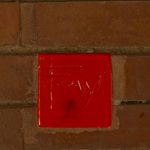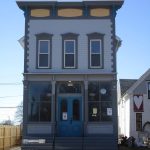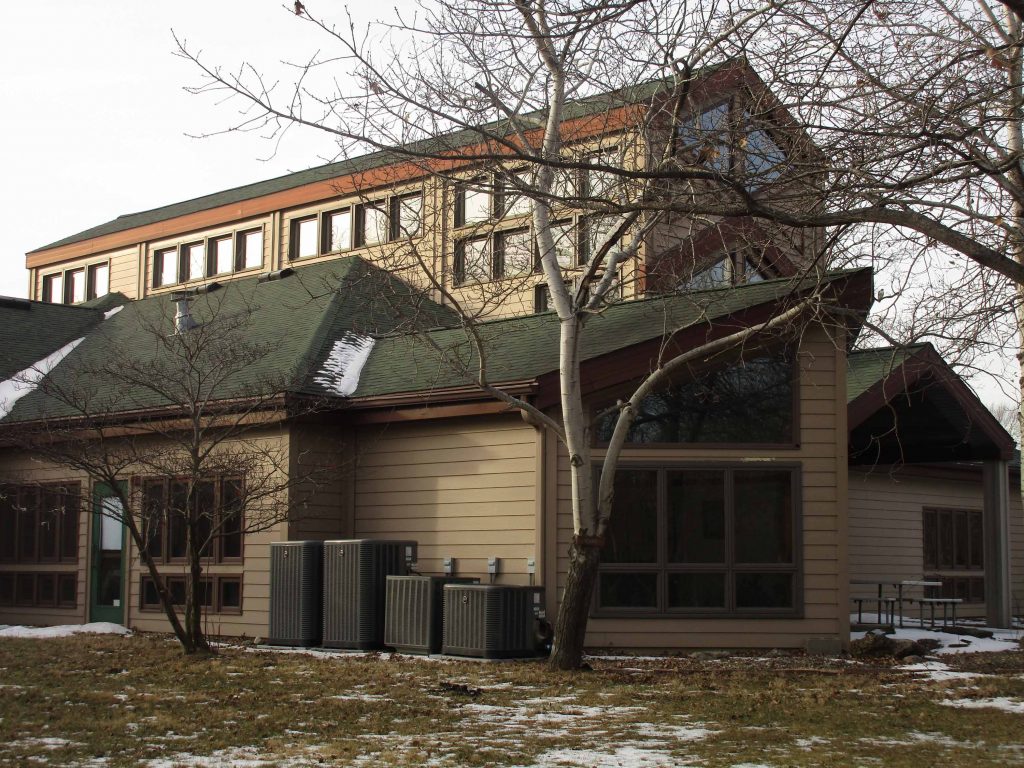
I recently spent a day recharging at Prairiewoods Franciscan Spirituality Center for a business development retreat. I had only visited this Hiawatha oasis once before so I really stopped and looked at the architecture this time. I was surprised to learn I was in one of the few LEED buildings in Linn County.
I am a certifiable eco-geek. I enjoy every minute learning about how architecture and construction methods can leave a smaller ecological footprint. Blame it on the environmentalism that permeated the school curriculum in the 90s, but I truly believe it is our responsibility to be good stewards of the only planet we have.
Established in 1996, Prairiewoods is a unique organization that promotes “ecological consciousness.” Their mission is to provide “a sacred space where people of all faiths and cultures are invited to explore and nurture their relationships with the Source of all Being, Earth, Self and Others.” Protecting nature permeates everything from their programs to their property.

Religious Symbolism
When I walk up to the main entrance, I am struck by the symbolism. The stacked geometry reminds me of a stylized wheat stalk reminiscent of Frank Lloyd Wright stained glass windows. Interpreted as a plant, it also creates an obvious reference to Prairiewoods. The exterior’s natural earth tones mirror its surroundings, ensuring that the building doesn’t detract from the landscape.
But as a place with deep Catholic roots, I also think about the power of three. There are three roof levels, all with sharp angles, and each contain triangle windows and siding accents. These could very well be references to the Trinity, a central element in Christian doctrine.
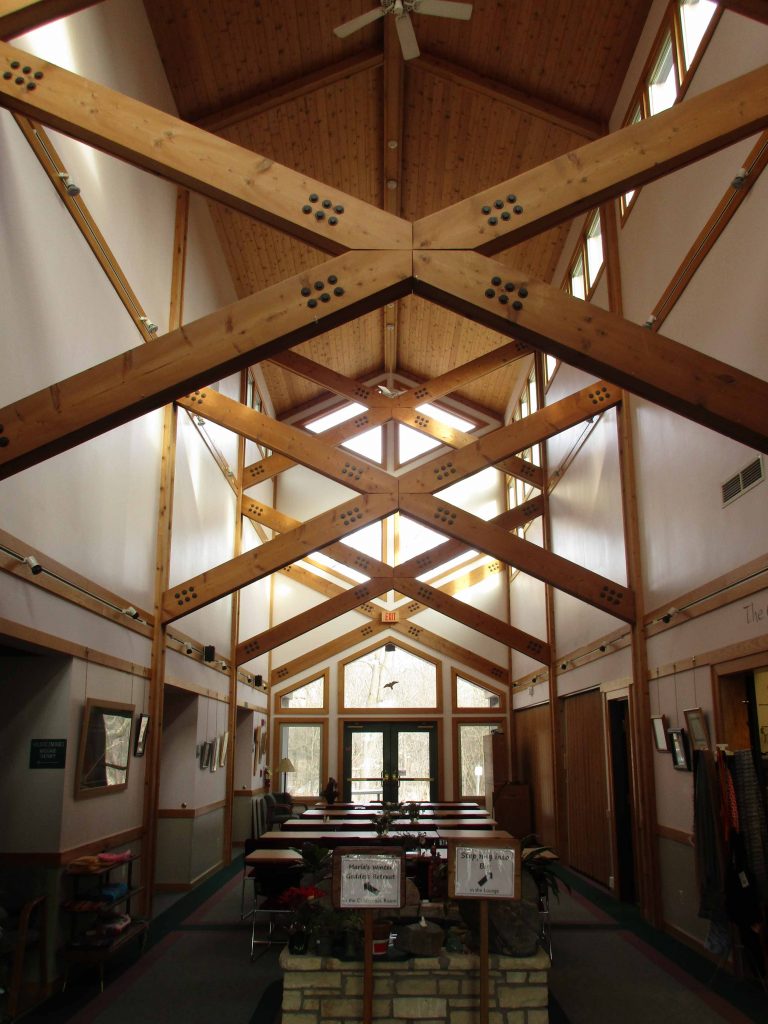
Step inside the atrium and the theme of triangles literally multiplies. The crossbeams form a series of X’s that create smaller triangles as they slant across the space. It’s also worth noting that X in Greek is Chi and is thus the first letter used to spell Christ. On closer examination of the beams, each of the four pieces comes together in the center to fashion a perfect cross. I surely can’t be the only one to read the space in this way – I would love to know if the architect consciously integrated all of this religious imagery into the design.

Prairiewoods was founded on the practice of ecospirituality, which explains why they sought LEED certification. LEED stands for Leadership in Energy & Environmental Design and is awarded by the U.S. Green Building Council. Prairiewoods is the second building in Iowa and the first nonprofit in the state to earn LEED Gold.
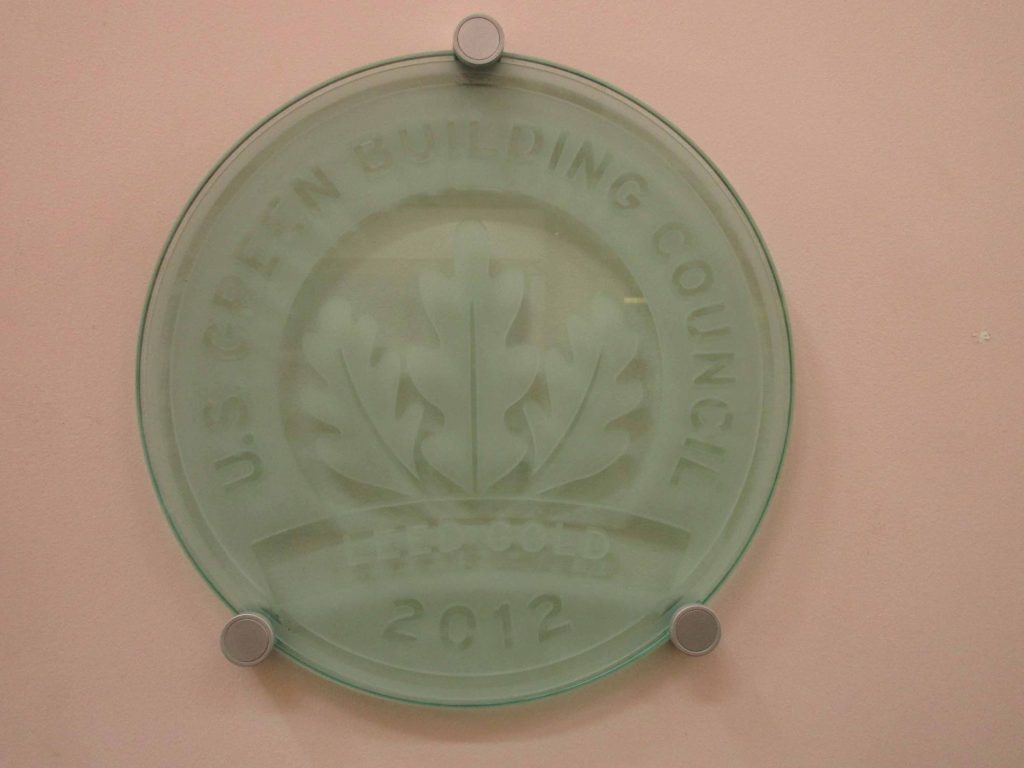
Where Faith and Sustainability Meet
Its solar array is a crowning feature and provides about 45% of the electricity needed by the center and an adjacent guest house. According to their website, the “17,500-watt system [is] capable of generating 22,500 kilowatt hours of electricity in one year.”
I’m personally besotted with the solar tubes. These dome-shaped devices are cousins of skylights but much more effective. Skylights are essentially an overhead window that lets in light. Because they are made of standard glass, they experience thermal transfer, meaning you will feel the warmth of sunshine or cold air radiating off them. Solar tubes, on the other hand, diffuse solar heat and glare while channeling light below.
This view shows the solar tubes from inside a restroom. There are no artificial lights on anywhere. Pretty impressive, particularly as the day I visited was overcast and fairly grey. It’s a brilliant way to reduce energy consumption.
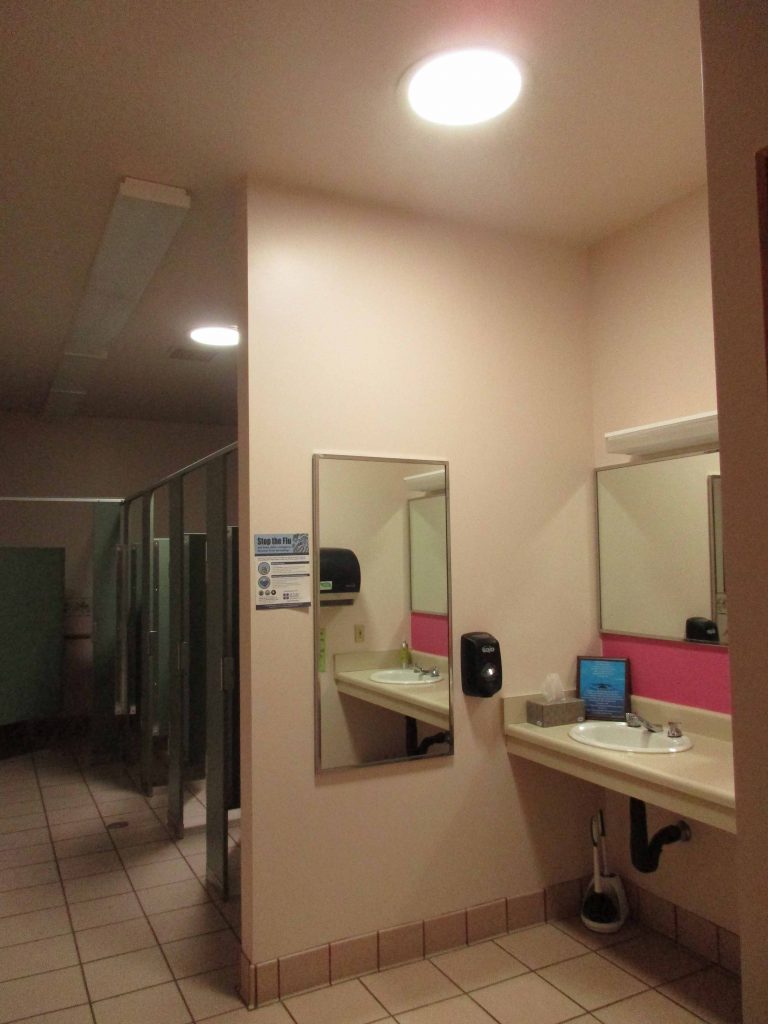
What impresses me the most about the greenness of Prairiewoods is that they earned LEED as an existing building. It is so much more difficult to add green strategies to an older property than designing sustainable features into the blueprints. You can read details about their other ecofriendly measures here.
What is your favorite sustainable building and why?
Disclosure – this is not a sponsored post. I was merely a guest at Prairewoods. All photos personal.


